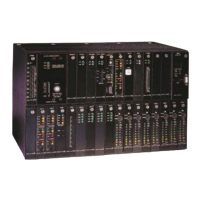D/I Mux III User’s Manual Appendix E. SNMP
224
Appendix E. SNMP
Simple Network Management Protocol (SNMP) is a protocol for, as well as a method of describing, the
configuration and status values used to manage simple network devices. SNMP is transported either
over Ethernet 10Base-T, or token ring, using the TCP/IP protocol stack, or communication interface.
Coastcom’s Advanced Multiplexer Control Units (AMCUs) use only the 10Base-T protocol. SNMP allows
both the SNMP manager and the managed device (the agent) to send packets to multiple destinations
without first negotiating a connection through use of User Datagram Protocol (UDP) over IP. UDP
transmits requests (or packets) in a connectionless transfer. However, since SNMP does not
acknowledge receipt of such packets, this method can be somewhat unreliable. Most data managers
compensate for this by offering time-outs or retry options, called TRAPs.
Configuration and status values are called objects in SNMP. These objects are described in a formal
document called a Management Information Base (MIB). General MIBs are published as Requests For
Comments (RFCs), and stored at various locations on the Internet. Companies commonly write their
own private MIBs specific to their applications. Such privately written MIBs are known as Enterprise
MIBS, and each company decides whether or not to release them for use by other companies. MIBs are
basic commands, built into SNMP language, that travel through the network, functioning much like other
basic computer programming commands, allowing SNMP to function.
The formal method for writing a MIB is called ASN.1, and has been published by the CCITT. SNMP uses
two primary ASN.1 constructs -- octet strings, and integers or whole numbers. Octet strings are used to
form ASCII text, while integers are used for SNMP V1. These integers are further broken down into
special cases of integers, gauges, counters, and time ticks. Integers are whole numbers, gauges
indicate constants, or maximums, counters are used for statistical purposes and increase until they reach
their maximum value and then return to zero, and time ticks indicate the time in 1/100ths of a second. All
objects are part of a single object tree (described numerically and by name mnemonics, indicating the
path through the tree to reach that particular object).
A function in SNMP called GET is used to retrieve a single value in the tree. A GET-NEXT command is
used to retrieve the next available object value. Since each object has a numerical position in the tree,
the software increases the number used to describe the object until an object with an associated value is
found. By using the GET-NEXT command, every value of every object supported by an agent can be
retrieved, even in dynamic tables, by using the object name/number and comparing it to the MIBs the
manager supports. The GET-NEXT function can then output the value with a mnemonic description of
the object.
SETs are used to change the value of octet strings, integers, and some gauges. Counters, however, are
not normally writable.
TRAPs are originated by the agent or managed device, and indicate a change in the operating
environment, such as an alarm or an event message. TRAPs, unfortunately, are not retrievable.

